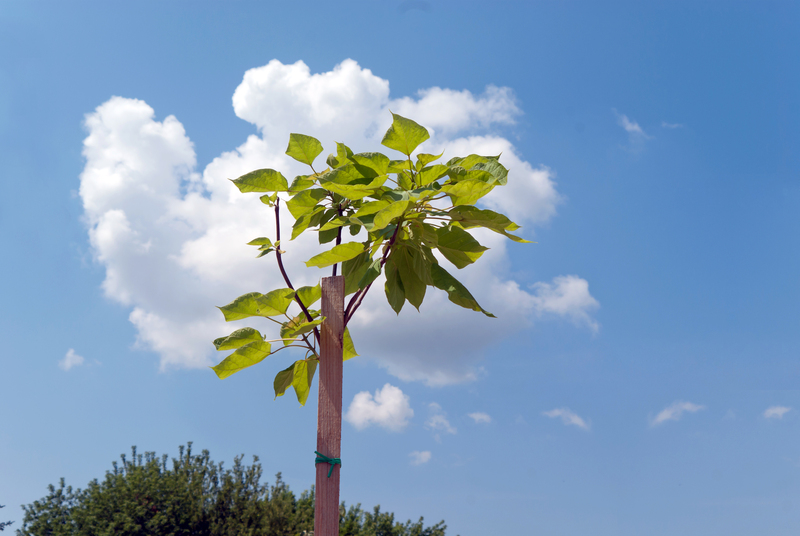3 Proven Tips to Ensure a Weed-Free Garden All Season Long
Posted on 16/08/2025
3 Proven Tips to Ensure a Weed-Free Garden All Season Long
Maintaining a lush and vibrant garden isn't just about the blooms and the produce--it's about keeping pesky intruders at bay. Weeds are the bane of every gardener's existence, stealing nutrients, sunlight, and space from your cherished plants. But with the right strategies, you can enjoy a weed-free garden throughout the season. In this in-depth guide, we'll unveil three proven tips to keep your garden weed-free all season long and ensure your green sanctuary stays immaculate and healthy!
Why is a Weed-Free Garden Important?
Before diving into solutions, it's important to acknowledge why weed control in gardens is so crucial:
- Competition: Weeds compete with your plants for water, nutrients, and sunlight.
- Pests and Diseases: Many weeds can attract pests or harbor diseases that may harm your desirable plants.
- Aesthetic Appeal: A garden choked with weeds doesn't look tidy or inviting.
- Plant Health: Managing weeds can help your flowers, vegetables, and shrubs reach their full potential.
With this in mind, let's explore the top three weed-prevention tips that will help you enjoy a healthy, bountiful, and weed-free garden all season long.

1. Start With a Clean Slate: Prepare Your Soil Meticulously
Preparation is the foundation of a weed-free garden. If you want to prevent weeds from taking over, you must begin by ensuring your garden beds are as free from weed seeds and roots as possible.
Remove Existing Weeds Thoroughly
Before you plant anything, spend time removing all existing weeds, including their roots and runners. Simple hand-pulling or using a hoe can work, but for deeply-rooted weeds, you might need a garden fork or specialized weeding tools. Remember:
- Pull when the soil is moist: Weeds come out more easily when the soil is damp.
- Get the roots: Leaving bits of root behind can result in rapid regrowth.
- Dispose responsibly: Don't compost weedy plants with seeds or roots that might survive decomposition.
Solarize Your Soil for Stubborn Weeds
A highly effective method for starting with a clean, weed-free environment is soil solarization. This process involves covering the soil with clear plastic during the hottest part of summer for four to six weeks. The heat generated under the plastic "cooks" weed seeds and roots, sterilizing the soil and drastically reducing future weed growth.
Tip: This is best done before planting and works well for annual garden beds and new plots.
Amend the Soil Thoughtfully
Once your soil is weed-free, add organic matter such as compost. While enriching your soil, ensure the compost is mature and free from weed seeds. *Using poor-quality compost can reintroduce unwanted invaders*. Buy your compost from a reputable source if you don't make your own.
2. Defend With Mulch: Nature's Weed Barrier
One of the most reliable methods for achieving a weed-free garden is mulching. Properly selected and applied mulch suppresses weed growth by:
- Blocking sunlight: Preventing weed seeds from germinating.
- Retaining moisture: Mulched soil stays hydrated, helping your plants thrive while discouraging weeds that prefer dry, exposed soil.
- Regulating temperature: A more stable environment keeps your plants healthy and better equipped to out-compete weeds.
Choosing the Right Mulch for a Weed-Free Garden
There are various mulch types, each with its own benefits:
- Organic Mulches: Wood chips, bark, straw, grass clippings, composted leaves. These add nutrients as they break down.
- Inorganic Mulches: Black plastic, landscape fabric, gravel. These typically last longer and require less maintenance.
For most home gardeners aiming for a natural, weed-free flower bed or vegetable patch, organic mulches offer the best combination of weed control and soil health.
How to Apply Mulch Effectively
Follow these pro-mulching steps for optimal weed suppression:
- Remove existing weeds before applying mulch--never mulch over living weeds.
- Apply a thick layer: 2-4 inches of mulch is usually ideal for blocking light and smothering seeds.
- Keep mulch away from stems and trunks to prevent rot.
- Replenish the mulch layer as needed, especially after heavy rains or as organic mulch decomposes.
Tip: For extra weed protection, lay down newspaper or cardboard under your mulch.
Mulching for Different Garden Zones
- Vegetable gardens: Use straw or untreated grass clippings. Avoid hay which can carry weed seeds.
- Flower beds: Wood chips or bark add decorative appeal and strong weed suppression.
- Shrubs and trees: Coarse wood chips are ideal for long-term coverage.
3. Maintain Persistent Vigilance: Regular Weeding and Smart Planting
Even with the best soil prep and mulching, no garden is immune to weeds forever. Consistent, ongoing maintenance is essential for a weed-free garden.
Develop a Routine for Weed Removal
Consistency is key. Dedicate just 10-15 minutes a week to walking through your garden and hand-pulling any new weeds. Early intervention prevents weeds from maturing and seeding, breaking the life cycle before they become a problem.
- Focus on young weeds: They're easier to remove and haven't seeded yet.
- Use the right tools: A hand weeder, hoe, or a simple trowel can make the job easier.
- Weed after rain: Damp soil loosens roots, making hand-pulling more effective.
Practice Smart Planting and Dense Spacing
Crowding out weeds is one of the most effective natural strategies for maintaining a weed-free garden all season long. Dense planting forms a living mulch, blocking sunlight and space that weeds need to sprout.
- Group compatible plants tightly together according to their growth habits and needs.
- Interplant groundcovers such as creeping thyme, sweet alyssum, or low-growing herbs between taller plants.
- Rotate crops each year to prevent weed adaptation and break the weed life cycle.
Promptly Deadhead and Remove Spreading Weeds
Never let weeds flower or set seed. Deadhead or pull them immediately if you miss any in routine checks. *One mature dandelion can spread thousands of seeds--preventing a single weed from seeding can save you hours of work later on!*
Additional Weed Prevention Techniques
Going above and beyond these core tips can give you an extra edge in your battle for a weedless garden:
- Install physical barriers: Edging or root barriers can prevent invasive weeds from creeping in from lawn or untended areas.
- Water wisely: Direct water at plant roots with drip irrigation or soaker hoses. Wet, bare surface soil encourages weeds to sprout everywhere.
- Encourage healthy soil biology: Active microbes and organisms suppress some weed species and help break down weed seeds.
When to Consider Herbicides?
In severe cases or for invasive perennial weeds, an organic or synthetic herbicide may be warranted. Use with care: Always read labels and avoid contact with desirable plants. Where possible, opt for targeted application or natural alternatives like vinegar-based sprays for young, tender weeds.
Common Mistakes That Encourage Weeds
Even the most careful gardeners can unintentionally invite weeds. Beware of these common mistakes:
- Tilling too often, which brings dormant seeds to the surface.
- Leaving bare soil exposed between plantings.
- Over-watering or watering the entire bed, not just around the plants.
- Adding contaminated mulches or composts that harbor weed seeds.
- Letting weeds go to seed even just once in a season.
Best Tools for a Weed-Free Garden
Having the right tools simplifies weed management:
- Hand weeder: For tap-rooted invaders
- Garden hoe: For shallow-rooted weeds between rows
- Mulch fork: For spreading your mulch evenly
- Landscape fabric and pins: For serious weed barrier solutions

Conclusion: The Secret to a Weed-Free Garden Is Consistency
Creating and maintaining a weed-free garden all season long is not just a one-time act but an ongoing commitment. By starting with a clean slate, defending with mulch, and maintaining vigilant, regular weeding, you'll tip the balance in your favor. Combine these proven tips for a weedless garden with smart planting and a little persistence, and enjoy the rewards of a thriving, beautiful landscape!
A weed-free garden not only enhances curb appeal but also boosts the health, productivity, and enjoyment of your green space. Start implementing these strategies today to ensure your garden flourishes weed-free all season long!
Frequently Asked Questions About Keeping Gardens Weed-Free
-
Q: How often should I weed my garden?
A: Regular, weekly weeding is most effective. Removing weeds early prevents them from establishing and seeding. -
Q: Which mulch is best for stopping weeds?
A: Mulching with straw, bark, or wood chips provides the best combination of weed suppression and soil improvement, but always choose what fits your specific garden needs. -
Q: Can I use landscape fabric for weed control?
A: Yes--especially under pathways or in perennial beds. Cover the fabric with mulch for added effectiveness and attractiveness. -
Q: Are there any eco-friendly weed killers?
A: Vinegar-based sprays, boiling water, or corn gluten meal can all help reduce weeds, but work best on young, small weeds.
Remember: The journey to a weed-free oasis is a marathon, not a sprint. With knowledge, tools, and dedication, you can enjoy a beautiful, weedless landscape from spring to fall, year after year!

